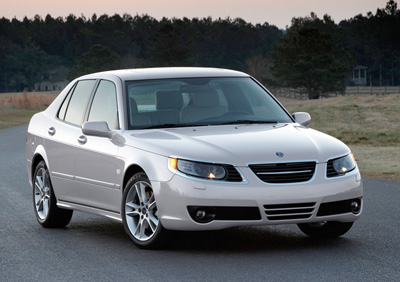
The Saab brand soon will disappear from the auto industry landscape, as General Motors Co. announces a wind-down for the Swedish marque inspired by aircraft design.
GM says it has failed to sell Saab, after negotiations with Dutch firm Spyker Cars broke down today in Sweden.
“I’m not sure at this point what more GM can do, we need to move on,” John Smith, GM vice president-corporate planning and alliances, tells the news media in a conference call.
However, Smith leaves the door slightly open to last-minute interest from another company to rescue Saab or some of its assets.
GM on Monday announced Beijing Automotive Industry Holdings Co. Ltd. had purchased some tooling and powertrain technology belonging to the current-generation Saab 9-3 and 9-5.
“We’re going to begin the wind-down process, but I suppose it is possible that during the wind-down process someone might come forward,” Smith says. “(BAIC) may have a bigger appetite, but we’ve not heard that from them so far.”
Smith emphasizes to media, particularly those calling in from Sweden, that GM made every effort it could to sell Saab. The auto maker had been searching for a buyer since February, when it said it would sell the brand as part of its restructuring.
Swedish performance-car maker Koenigsegg Group AB, which had been widely expected to purchase Saab and with whom GM spent the most time negotiating, dropped its pursuit three weeks ago, leaving the Detroit auto maker scrambling for a new buyer.

Dutch firm Spyker Cars responded, but GM says “certain issues arose” that neither side could resolve.
Smith is mum on details of the collapsed talks but relates discussions with the European Investment Bank, which was to have financed a sale of Saab, remained an “open point” as late as this morning.
Smith praises the Swedish government for supporting the process. However, Sweden was not expected to take an ownership stake in Saab, which has 3,400 direct employees and 1,100 dealers worldwide.
The wind-down will determine how Saab associates will be compensated. Smith says dealers will either opt to walk away from the business or seek another brand to fill their empty showrooms.
Ward’s shows Saab has 2,095 units in inventory in the U.S. as of Nov. 30, including 1,647 9-3s, 278 9-5s and 170 9-7s.
Many Saab stores share space with other brands, so they could continue operating, he adds.
Smith says GM tried “very hard” to keep Saab alive, dismissing the notion GM is responsible for the brand’s ruin.
“There’s been no shortage of effort over the past 20 years to put Saab on long-term sustainable footing,” Smith says. “In the global automobile business today you can see every OE experiencing stress. You can see Toyota Motor (Corp.), itself, having to deal with some restructuring issues.
“In that context, it shouldn’t surprise anybody in this call that a relatively small vehicle manufacturer might be experiencing a tougher go of it, which they have for some time.” Saab has never generated a profit for GM.
Smith also discounts the notion that Saab’s demise, on top of its failure to sell its Saturn brand, will have any effect on the pending deal that will deliver Hummer to China-based Sichuan Tengzhong Heavy Industrial Machinery Co. Ltd.
“I don’t at the moment see any reason why one would be affected by the other,” he says.
Saab evolved from aircraft manufacturer Svenska Aeroplan AB, which was established in 1937 and went on to build jets. The first Saab-brand car to debut was the 92 prototype, which took its shape from the profile of an airplane wing.
Saab went on to make a name for itself as a maker of cars with quirky styling, sporty performance and superior safety.
Today’s news comes as the auto maker announces its redesigned 9-5 achieves the EU’s top rating for crashworthiness.




